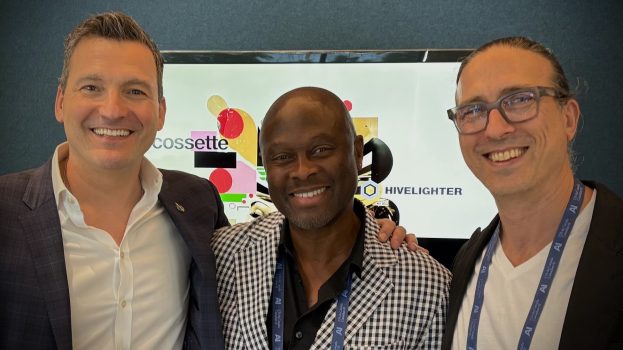By Graham Watt
Advertising persuasion experienced amazing growth in the late ’50s after William Bernbach showed everyone how to do it, and this success was affected by a curiously powerful, persuasive creative talent. People speaking with people rather than at them.
This was a breakthrough. In those days few people thought of feral, informally-educated, artistic creative people, childlike, empathic, who could see around corners, especially if they were the corners of those boxes you can get into when you are severely formally-educated.
Some of these writers and art directors seemed to understand how to go right through into people’s being and make them feel understood and affected. When the planning change began, and systems took over creative control, some of them drifted into music, meditation, rehab and sanitariums. Some may have died in whimsical ferrocement hang glider accidents. Others went into forestry and got splinters. A few became hacks.
Because at this time, research numbers guys from places like Cambridge were becoming perhaps a wee bit put out with these DIY-educated creative dudes who were doing the deep thinking and actual creative execution of advertising. Didn’t seem right to them because these people swore and argued, had dodgy haircuts, wet their pants at presentations and some looked like street musicians. They were of the people rather than at them.
So the severely-educated people (not at all dummies) found a way to offer kind of the same shit as the ferals with their empathy and wide eyes, only with charts, plans, quali-, quanti-, and quasitative research in order to get control of the actual research and bend it so they could do both the research and the idea part. This was brilliant, especially the quasi- stuff, as it allowed them to own the bias and control the creative. But it meant they had control of the idea and this could then turn the remaining creative dudes into cake decorators who didn’t have to think a lot about original ideas.
All this happened about the time Elvis imploded. The severely-educated lads and lasses and their research acolytes could then toy with a new sort of creative who didn’t have to think, but could still draw and write. Some could be funny too. They’d now get the ideas from the processed juice-type guys. This eliminated the power of the feral, intuitive, creative people because clients in big companies with angry shareholders use charts like little kids use sucky blankets. Doesn’t matter what poop is on them either. And so it became an easy sell.
Finally the severely-educated research dudes who still couldn’t think around corners decided they needed a sort of specialité de la maison if you will, and broadcast that they had something called insights (possibly taken from Latin or old Norse, cerebrum peditum, fart of brain).
As noted earlier, the original deep-thinking creative people were, for the most part, feral intuitive thinkers, unboxed, eccentric, childlike, capricious, artistic, literate, musical and most of all quite insecure. They still exist, but their job of initial, original thinking as well has gone to the planners. Tragic.
Many of these ferals were surprised that people would pay you well to do stuff you really liked doing: thinking deeply, wondering, becoming immersed in problems affecting people that could be solved with persuasion, being able to speak with rather than at or to them. And it was economical as well for the clients. All this creation of an affective presence from such a pedestrian source was disturbing to the neo-research dudes, trapped in logic, who, as some feral creative guy said: “even need a chart to fart.”
This entire era that saw a Beothuk-like end to the feral-thinking creative people was called Account Planning Time.
It was really just more system-tech and enormous financial cost applied to the aforementioned processed-juice thought ideas. In 1962, advertising research in North America cost $650 million dollars a year. Today, with the disappearance of most of the feral creative weirdos, advertising research in North America costs $7.5 billion a year, with no increase in brilliant persuasive and affective work, perhaps the only rather quirky benefit found: more control and standardization of an acceptable level of mediocrity.
The amount of inspiring persuasive advertising was always small, even in Bernbach’s time. Feral creatives are rare, but they always exist. It’s just no one looks for these odd, effective people. A human resources problem. And what’s lessened now is the possibility of real breakthroughs.
In a shoe box in an abandoned Vancouver salmon smoker that was once a small ad agency, was found this description of schooled and feral creativity:
“The schooled creative mind is a bright mind’s thinking tamed. It plods into its problem, satchel full of things it knows, ticking off its checklist as a pilot would, disciplined, methodical, incisive, systemitized, hoping to find a truth.
“The feral creative mind, in panic to find a truth, jumps back and forth, turning over stones, sniffing the air, all at once, up and down, a niggling doubt removed, another rising, something far away related, something not, a howl in the night, until, through all the crumpled paper in a cluttered mind a light is struck that’s soon so bright a problem fades, and a feral creative mind can live another day.”
With it was an empty Cherry Blossom box, some dried rat poop and a speech from Cardinal Newman (160 years earlier) that seems to dump on the severely-educated research guy’s premise:
“Thought and speech are inseparable from each other. Matter and expression are parts of one: style is a thinking out into language. This is what I have been laying down, and this is literature; not things, not the verbal symbols of things; not on the other hand mere words; but thoughts expressed in language. Call to mind, Gentlemen, the meaning of the Greek word which expresses this special prerogative of man over the feeble intelligence of the inferior animals. It is called Logos: what does Logos mean? it stands both for reason and for speech, and it is difficult to say which it means more properly. It means both at once: why? Because really they cannot be divided, because they are in a true sense one. When we can separate light and illumination, life and motion, the convex and the concave of a curve, then will it be possible for thought to tread speech underfoot, and to hope to do without it, then will it be conceivable that the vigorous and fertile intellect should renounce its own double, its instrument of expression, and the channel of its speculations and emotions.”
Thought and execution are parts of one.
A final note: “Advertising is fundamentally persuasion and persuasion happens to be not a science, but an art.” – William Bernbach
 Sackville, New Brunswick-based Graham Watt began as an ad writer in 1961 and alas, is still an ad writer 53 years later. He’s the former CD of McKim Advertising and Grey Advertising, and president of Watt Burt Advertising in Montreal.
Sackville, New Brunswick-based Graham Watt began as an ad writer in 1961 and alas, is still an ad writer 53 years later. He’s the former CD of McKim Advertising and Grey Advertising, and president of Watt Burt Advertising in Montreal.
Photo courtesy of Shutterstock.






















